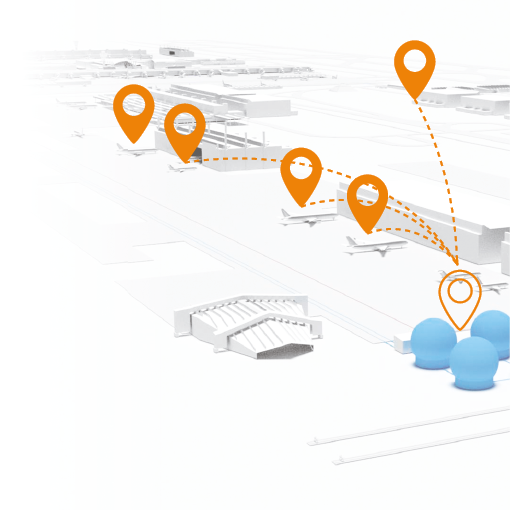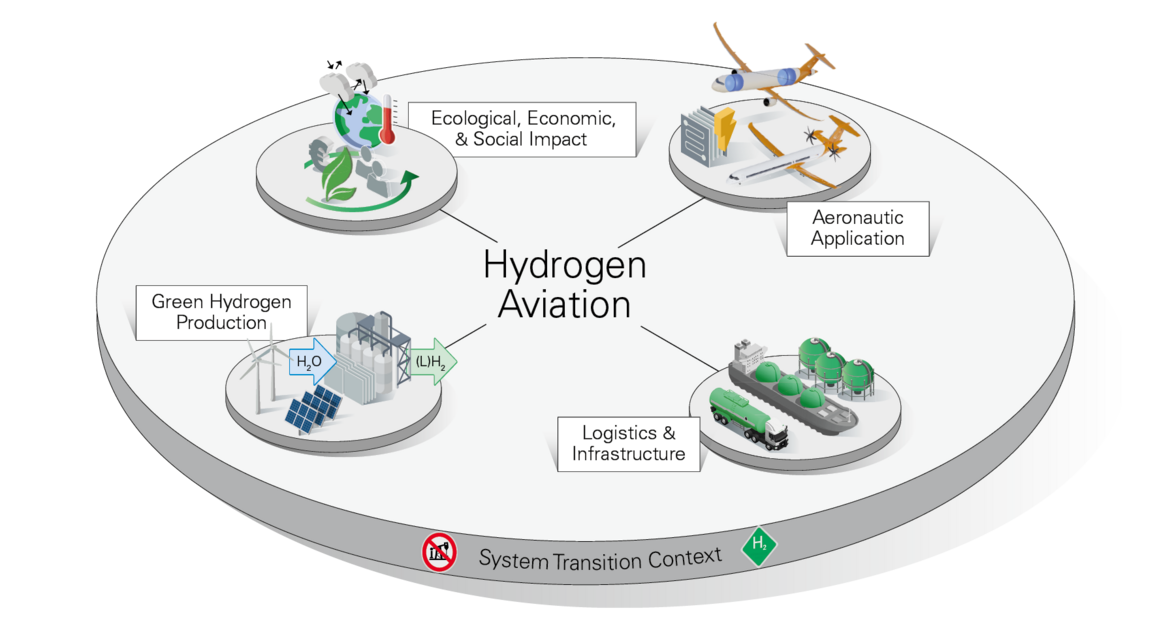Since the properties of liquid hydrogen (LH2) differ drastically from kerosene, radical developments are required to enable the use of green LH2 as an aviation energy carrier. Furthermore, for an in-depth understanding of the potential of hydrogen in aviation, a holistic assessment is indispensable. In the context of a broader system transition towards a hydrogen-based economy, not only ecological and economic criteria, but also development and scaling aspects of production, supply, and aircraft technologies demand consideration.

In this regard, airport infrastructure represents a significant challenge: handling of cryogenic LH2 at temperatures of –253 °C necessitates suitable storage, distribution, and refuelling technology; losses through boil-off need to be minimised. At the same time, conflicts with operational processes are to be avoided. Further, adequate infrastructure sizing entails taking into account demand patterns. In order to ensure early identification of the hurdles involved and to develop strategies to overcome them despite the currently low maturity of the technologies involved, Bauhaus Luftfahrt performs model-based infrastructure assessments for various application cases. The studies conducted in the multilateral LuFo project 328H2-FC, for instance, focus on the comparatively near-term introduction of an LH2 regional aircraft, while a more long-term perspective is taken in several theses, in which a high fleet penetration of hydrogen aircraft is assumed. The volumetric throughput of the refuelling equipment, type and duration of the purging and pre-cooling step, as well as minimising transfer losses have, thereby, been identified as major levers.



